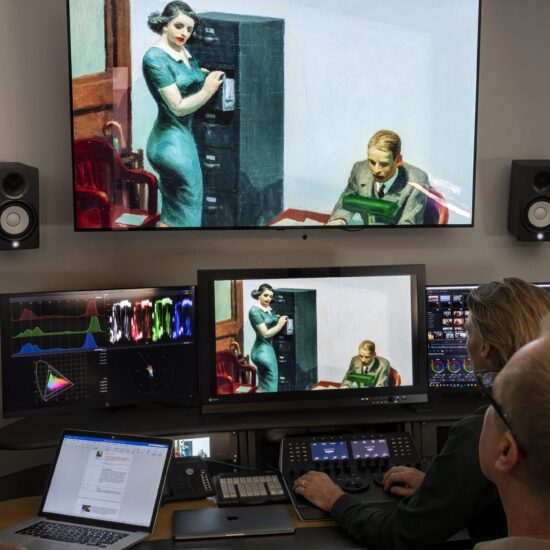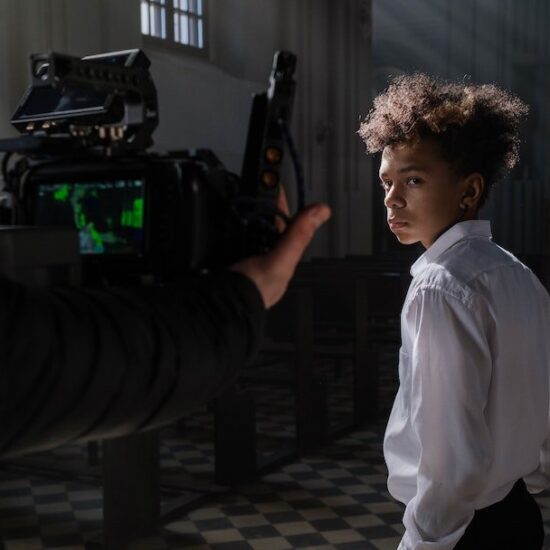
It can’t be denied that the international community largely influences the film industry. Any filmmaker who wants to make their film well known must cross language barriers to reach a global audience. This is where the importance of subtitle translation in the film becomes apparent, providing a means for clear communication while preserving the work’s artistic integrity.
This is why the art of subtitle translation is essential in filmmaking. It is a communication tool to bridge cultures, allowing stories to be universally understood and appreciated.
So today, we will discuss how aspiring and independent filmmakers can effectively translate subtitles while preserving their films’ artistic integrity. We will go deep into the essential advice and techniques to ensure your movie communicates effectively and respects the diversity of its viewers.
Understanding the Art of Subtitle Translation
Subtitling is more than a mere language conversion. It involves adapting dialogues, idioms, cultural references, and humor to the target audience while maintaining the source message’s essence. Moreover, limitations such as the number of characters per line and reading speed pose unique challenges to the translator.
Inaccurate translations can disrupt the viewer’s experience and even change the film’s intended meaning. A culturally sensitive translation considers the target audience’s cultural context, promoting understanding and respect for diversity.
Challenges of Translating Subtitles
Subtitles are about more than just translating words. They’re about conveying meaning. Here are some challenges and solutions involved in translating subtitles.
- Translating Humor and Sarcasm: These elements can be difficult to translate across cultures. The solution lies in finding culturally appropriate equivalents that evoke the same humor or sarcasm.
- Maintaining Contextual Accuracy: Ensuring the translation aligns with the film’s context is crucial. When translating, consider the scene’s emotion, the character’s personality, and the storyline.
- Conveying Cultural References: Translating references that the target audience might not be familiar with can be challenging. Use footnotes or translator’s notes to explain such references or find an equivalent connection in the target culture.
- Subtitling Song Lyrics: Translating song lyrics while maintaining their rhythm and rhyme can be difficult. A suggested solution is to focus on conveying the song’s mood and meaning rather than maintaining the original rhyming structure.
- Space and Time Constraints: Subtitles should be concise to fit on the screen and align with the dialogue’s pace. This may require skillful editing and summarizing without losing essential information. Online tools can assist with this aspect.
Tips for Effective Subtitle Translation
As mentioned, subtitle translation is an art that requires a deep understanding of language, culture, and the technical aspects of filmmaking. To maintain the integrity of the original dialogue while ensuring that it resonates with a global audience, filmmakers must apply a set of best practices.
- Understand the Context: Grasp the full context of the dialogue before starting the translation. Understanding the characters’ tone, humor, cultural references, and emotional state is crucial.
- Maintain Clarity and Precision: Ensure the translated text is clear, precise, and easy to understand. Avoid complex sentence structures that might confuse the viewer.
- Be Concise: Given the speed at which subtitles are read, keeping them concise is important. Ideally, a subtitle should not exceed two lines.
- Respect Timing and Synchronization: The subtitles should align with the audio and match the characters’ lip movements as closely as possible.
- Preserve Meaning and Intent: Even if you have to change some words or sentence structures for brevity or clarity, always strive to maintain the original dialogue’s meaning and intent.
- Localize Idioms, Slang, and Cultural References: Not all idioms, slang, or cultural references translate well literally. Localize these elements so they make sense to the target audience.
- Consider Readability: Choose a font, size, color, and background for the subtitles that make them easy to read without distracting from the film’s visuals.
- Proofread: Always review the translated subtitles for spelling, grammar, or punctuation errors and ensure the translation is accurate and contextually appropriate.
- Test the Subtitles: Watch the subtitled film to ensure the text is easy to read, syncs well with the dialogue, and does not block any critical visuals.
- Solicit Feedback: Get feedback from native speakers or people familiar with the target culture to ensure the translation is accurate and culturally appropriate.
Techniques for Preserving Artistic Integrity
Besides the tips we mentioned above, we also included a couple of techniques you must consider when translating subtitles, as follows.
- Styling and Formatting Subtitles for Visual Impact: Subtitle design should complement the film’s visual aesthetics. Appropriate color, font, size, and positioning help make the subtitles visually appealing and easy to read.
- Balancing Readability and Aesthetics: While maintaining visual appeal, ensure the subtitles are easy to read. Keep in mind the average reading speed and character limitations.
- Incorporating Subtitle Design as Part of the Storytelling: Use subtitles as a storytelling tool. For instance, color-coded subtitles can denote different speakers or emotions.
- Subtitling for Hearing-Impaired Viewers: Include non-verbal cues, like music notes for background music or brackets for off-screen dialogue, to enhance the viewing experience for the hearing-impaired.
- Creating Inclusive and Accessible Subtitles: Consider color contrast, font size, and background opacity to ensure the subtitles are clear and easy to read for all viewers.
Quality Control and Review Process
Reviewing and editing are crucial steps to ensure the quality of subtitle translations. Errors in translation can negatively affect the viewer’s experience and the film’s reception. Check for grammar, spelling, punctuation, and capitalization errors. Ensure consistency in terminology and style throughout the film.
Engage native speakers of the target language, cultural consultants, and the film team for feedback. Their insights can help refine the translation.
Practical Tools and Resources
Besides understanding the nuances and challenges of translating subtitles, we have also included in this article a couple of resources and tools you can use to your advantage to create a more multilingually accessible film.
Human Translation Services and Agencies
Free online translation tools have become more accessible than ever. However, nothing still beats having a professional human translator specialized in subtitle translations evaluating and transforming the words creatively.
It might seem expensive, but many affordable translation services provide quality work. It will depend on the languages you translate from one to another and the number of languages you will have your film in. Some of the translation services platforms you can check out are Tomedes, ProZ, and Translators Cafe. These sites provide an avenue where you can work with remote-based human translators from all over the world.
Subtitle Translation Software and Tools
Besides working with human translation services, you can use subtitle software with in-build translation applications like Aegisub and Subtitle Edit or subtitle translation tools such as Subtitles Translator and Translate-Subtitles.
For film directors who are proficient in another language who wrote the film, you can translate the text yourself with the tools mentioned above. We understand that scriptwriters have style in writing in the dialogues, so it would make sense if you still want to have creative control over the translation of the subtitles.
Online Communities and Forums for Collaboration and Support
You can also join online communities and forums like SubTalk, Reddit, and Amara to learn and collaborate with other subtitle translators and gain insights and tips on better developing the craft of translating subtitles for your target audience.
If you want to become a subtitle translator, you can work on volunteer projects which these online communities are known to do, to improve your skills further. If you are a beginner in subtitling in general, these sites are great places to learn from veteran subtitle editors.
DIY Subtitle Translation
While working with language professionals in translation services is a viable option, independent filmmakers often undertake the task of subtitle translation themselves. This DIY approach can be more cost-effective and allows greater control over the creative process. However, it requires a keen understanding of both the source and target languages and a sensitivity towards cultural nuances. Online tools, communities, and resources, as mentioned earlier, can greatly assist in this endeavor.
There are several challenges associated with DIY subtitle translation, but these can be addressed with a systematic approach and the right resources:
- Limited Language Proficiency: A solid understanding of both the source and target language is crucial for effective translation. If you are not fluent in the languages, consider using online language learning resources, or collaborate with a fluent speaker.
- Cultural Misinterpretation: Translating culture-specific phrases or humor can be tricky. As mentioned, online forums can help you find suitable equivalents in the target language.
- Subtitle Synchronization: Ensuring the timing of the subtitles matches the dialogue can be challenging. Subtitle creation tools can assist with timing and synchronization.
- Limited Budget: Hiring a professional translator might not be feasible for everyone. You can also use free open-source tools for creating and editing subtitles.
Conclusion
Mastering subtitle translation is a vital skill for any filmmaker seeking to share their work globally. Effective and sensitive translation, coupled with visually engaging subtitle design, can make a film accessible, inclusive, and universally appreciated. Remember that subtitles are not just tools for communication; they are integral parts of the film’s storytelling. As filmmakers, it’s your duty to use them creatively and effectively to enhance your viewers’ experience. Happy translating!
Mitesh Thakur is the Technical Localization Manager at Tomedes, a company that provides translation services, interpreting and localization solutions for businesses and Fortune 500 companies. With Tomedes, he has worked on several localization projects, such as subtitle translating videos and content localization. He has written numerous articles on the localization and translation process in various industries, like cinema and marketing.














